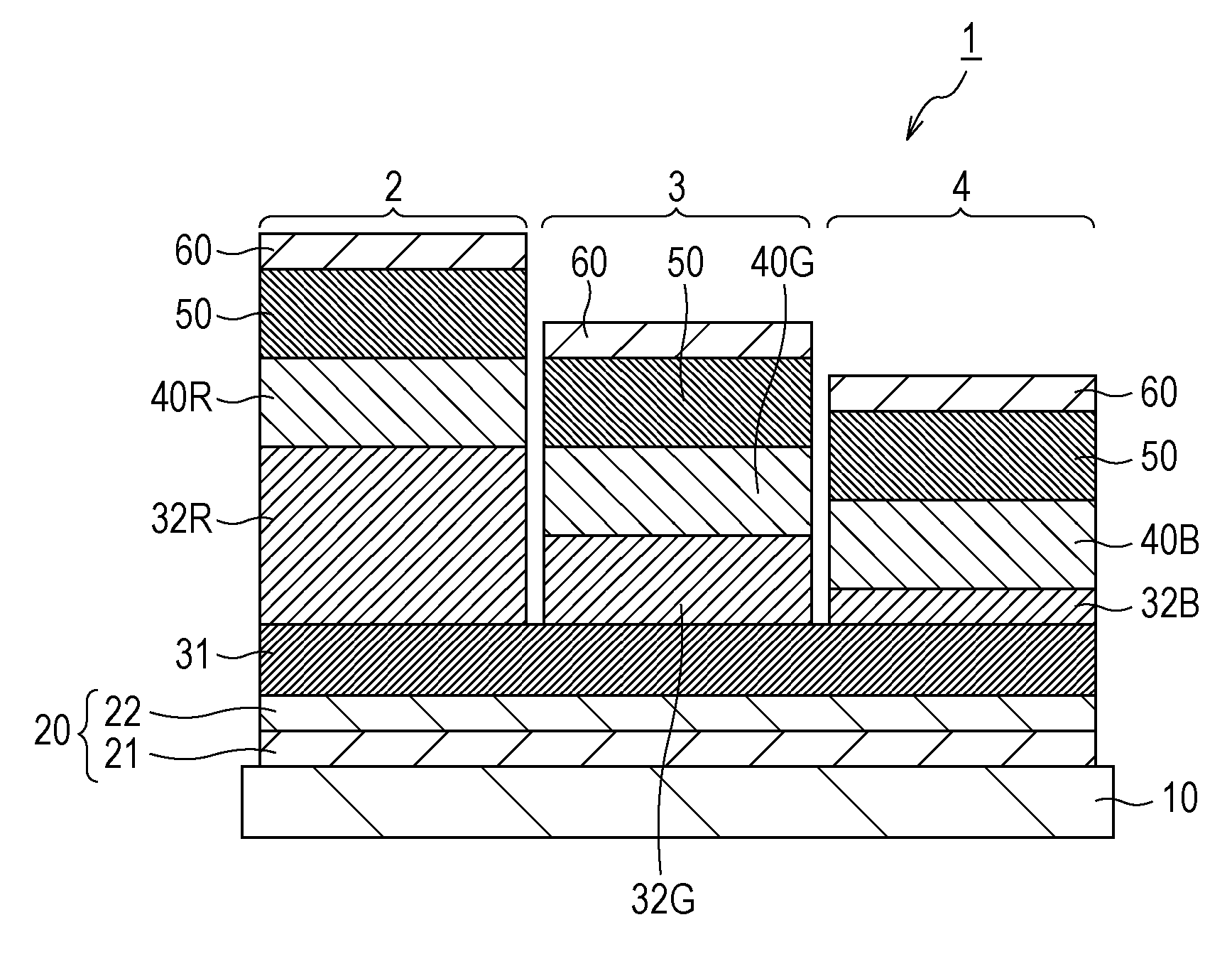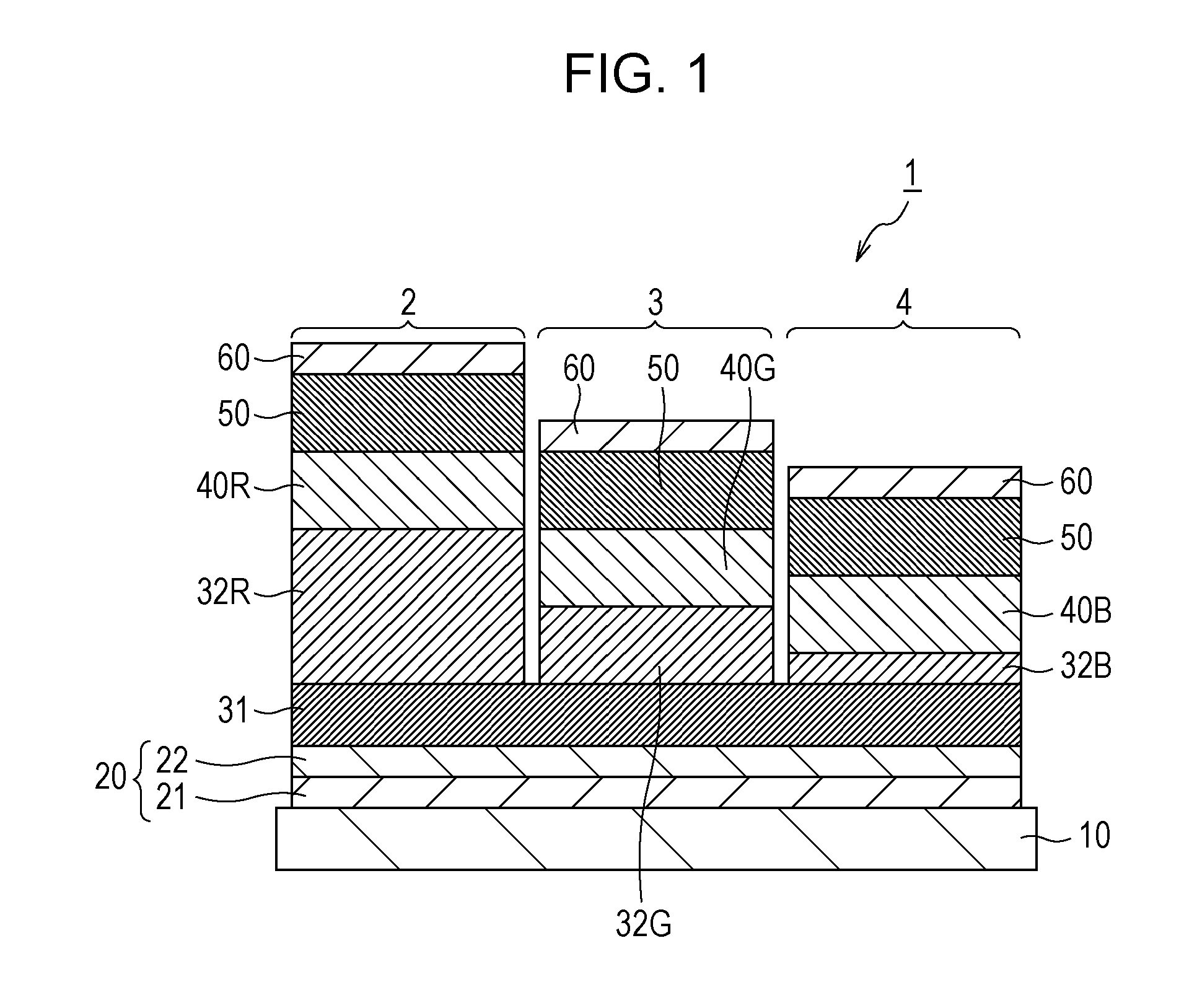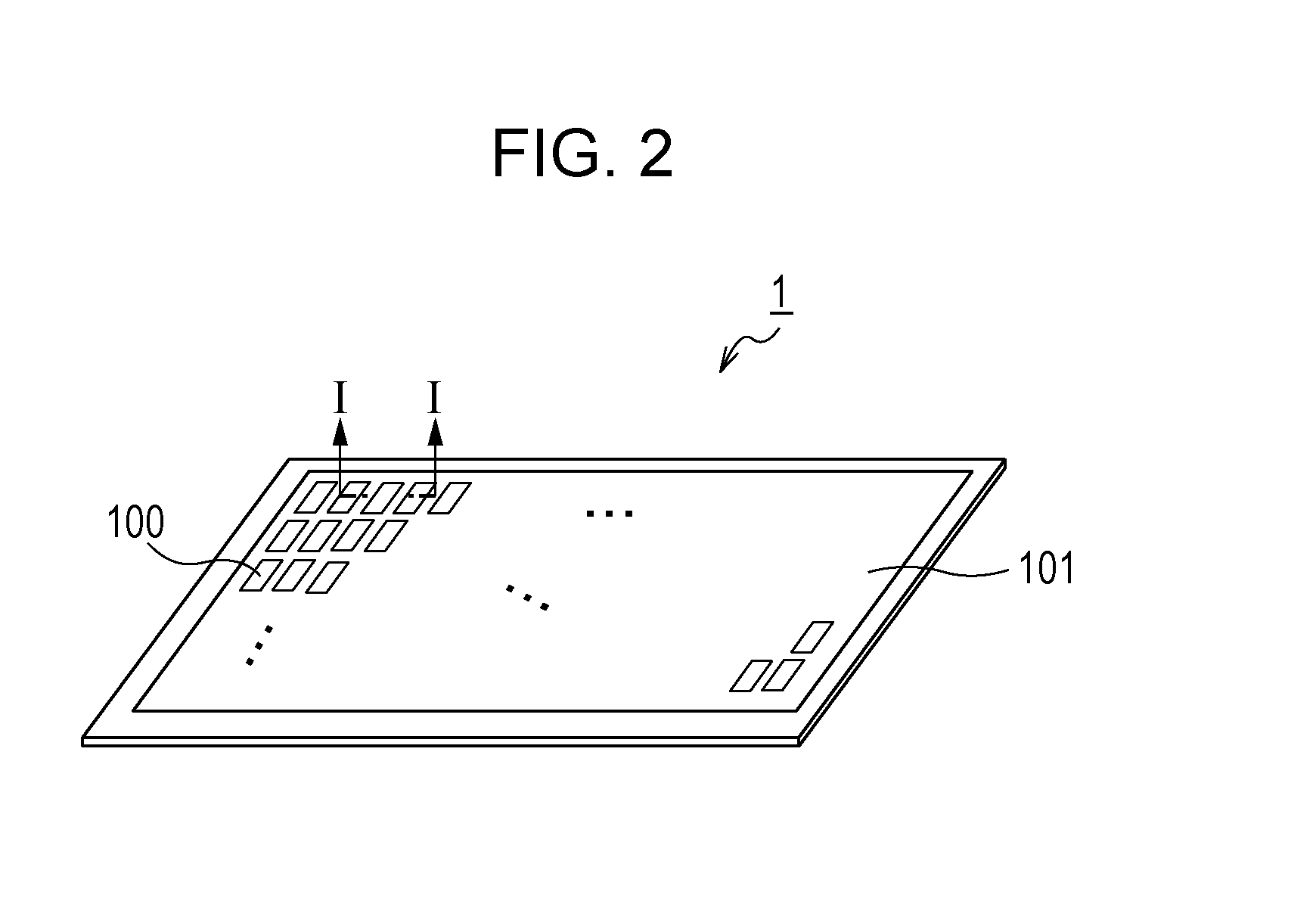Display device
- Summary
- Abstract
- Description
- Claims
- Application Information
AI Technical Summary
Benefits of technology
Problems solved by technology
Method used
Image
Examples
example
[0062]Aspects of the present invention are further described below with reference to an example. The present invention is not limited to the example.
[0063]A display device shown in FIG. 1 was prepared by a procedure below.
[0064]A layer of an aluminum alloy (Al—Nd) was deposited on a glass substrate (substrate 10) by a sputtering process, whereby a reflective sub-electrode (reflective sub-anode) 21 was formed. The reflective sub-electrode 21 had a thickness of 100 nm. A layer of ITO was deposited on the reflective sub-electrode 21 by a sputtering process, whereby a transparent sub-electrode (transparent sub-anode) 22 was formed. The transparent sub-electrode 22 had a thickness of 38 nm. The reflective sub-electrode 21 and the transparent sub-electrode 22 collectively functioned as a first electrode (anode) 20. A polyimide film was formed on the substrate 10 having the first electrode 20 and was then patterned, whereby a pixel separator (not shown) was formed. The pixel separator had ...
PUM
 Login to View More
Login to View More Abstract
Description
Claims
Application Information
 Login to View More
Login to View More - R&D
- Intellectual Property
- Life Sciences
- Materials
- Tech Scout
- Unparalleled Data Quality
- Higher Quality Content
- 60% Fewer Hallucinations
Browse by: Latest US Patents, China's latest patents, Technical Efficacy Thesaurus, Application Domain, Technology Topic, Popular Technical Reports.
© 2025 PatSnap. All rights reserved.Legal|Privacy policy|Modern Slavery Act Transparency Statement|Sitemap|About US| Contact US: help@patsnap.com



